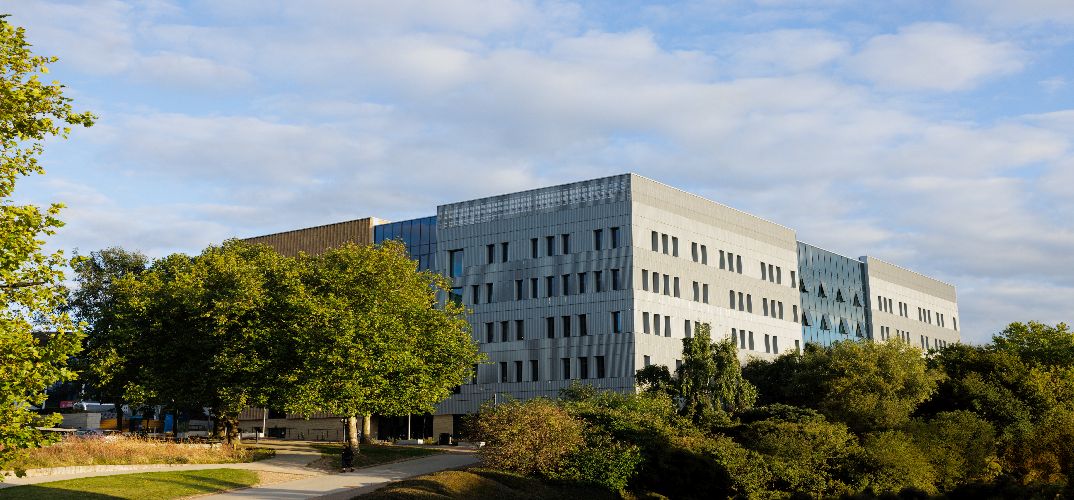University of Hertfordshire’s new, £100m, state-of-the-art, School of Physics, Engineering and Computer Science opens

The University of Hertfordshire’s new state-of-the-art, School of Physics, Engineering and Computer Science – known as Spectra – has opened to students and staff this week.
Bringing together the University’s physics, engineering and computer science departments, facilities, equipment and knowledge into one place for the first time, the £100m, five-storey building is the largest structure on the University’s College Lane campus following six years of building work.
Kitted out with some of the highest spec equipment available, new facilities include two dedicated physics laboratories; two isolated cyber systems rooms that allow cyber security students to test themselves against cyber-attack; a £2m suite of wind tunnels; a strong floor to help test material strength; new robotics labs and a robot football pitch for developing and testing autonomous robot behaviour; flight simulators that can land in any airport across the world have also been installed, alongside a welding bay and controls testing suite, plus two Caterham lightweight sports cars and a Tesla for use in autonomous vehicle design.
Professor Daniel McCluskey, Dean of Spectra at the University of Hertfordshire, said:
“Spectra has been deliberately designed to provide students with an environment that mirrors the working environments in their future careers. This is to ensure we deliver on the University of Hertfordshire’s mission to provide the highest quality, career-focused education that hugely enhances career prospects and ensures our students graduate both work-ready and able to make an impact in real-world settings.”
The increased range of research, education and training made possible by Spectra will help address crucial skills gaps within the STEM sector – with 35% of UK firms reportedly having difficulties recruiting staff with skills in STEM. It will also advance the University’s capacity to partner with local, regional and national aerospace, engineering, bioscience and other STEM companies to support their needs, and together develop economically viable research and products.
The design of the building, which has been developed to ensure all research and teaching areas are visible throughout, is intended to ensure students and researchers are always aware of what each other are doing. Communal workshops on each floor will allow staff and students from different subjects to collaborate more efficiently together.
“We are confident that the cross-thinking encouraged by Spectra will lead to an increase in postgraduate research and raise the University’s international reputation,” added Professor McCluskey.
University of Hertfordshire’s Vice-Chancellor, Professor Quintin McKellar, said:
“The core of Herts’ ethos is providing a career-focused education that meets real-world challenges. Spectra will not only bridge crucial skills gaps and generate growth, but it will produce students who are work ready, fit for the high-tech, net zero economy of the future and able to contribute to society in a positive way. This will not only benefit their own prospects and success, but also that of the wider nation’s growth, progress and development.
“Spectra will be an incredible, cutting-edge facility for our academics to progress ground breaking research and to teach in fantastic facilities. It will also encourage businesses to come and research, develop and test their latest innovations.
“To see this incredible building come to fruition, and to be able to provide such an epic learning and training environment for the benefit of so many is truly a privilege. I want to thank everyone who has worked so hard to get us to where we are today, and I can’t wait to see all the great work to come from our new home for Physics, Engineering and Computer Science.”
Herts has been ranked first for overall student positivity, for the second year running, among universities in the east of England.